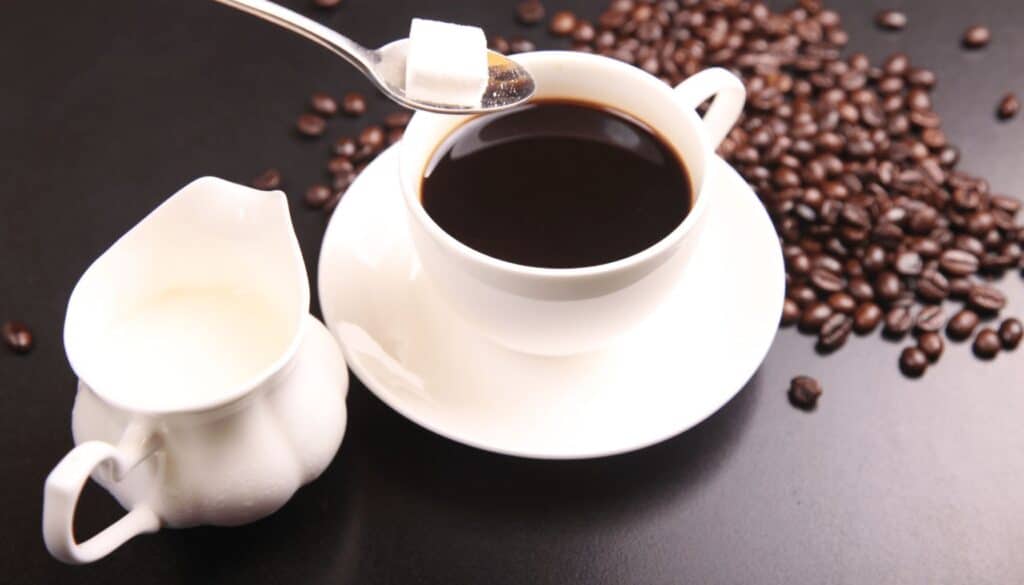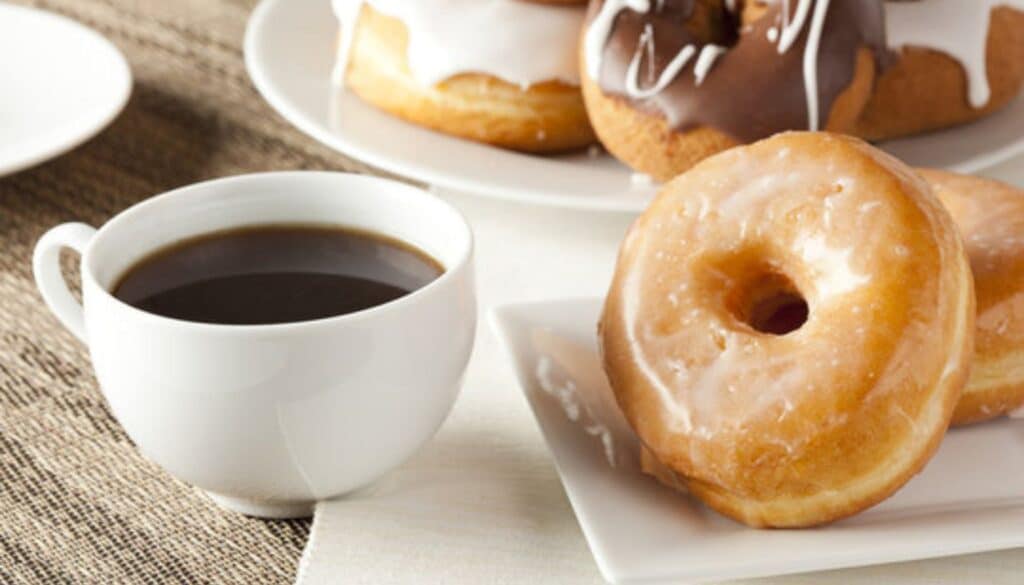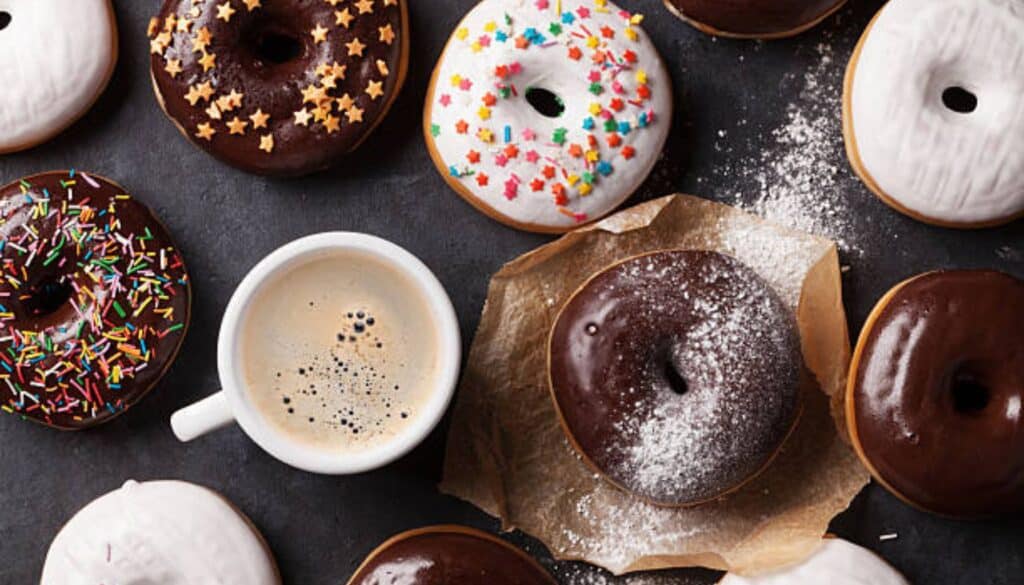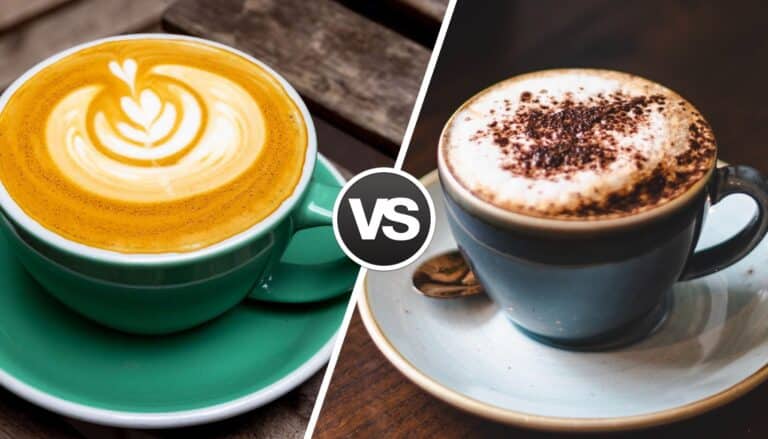Coffee stands as one of the most beloved beverages around the globe, cherished for its rich flavor, comforting warmth, and revitalizing caffeine kick. Its roots span continents and cultures, making it a staple in daily routines and social rituals alike. From the bustling coffee shops of urban centers to the quiet kitchens of remote homes, coffee’s universal appeal is undeniable. This widespread consumption also brings to light an important aspect of our dietary habits: the nutritional content of what we drink.
Understanding the caloric content of coffee is crucial, especially in a world increasingly focused on health and wellness. While black coffee is almost negligible in calories, the picture changes dramatically as soon as we introduce additives like milk, sugar, and flavored syrups. These additions can transform a simple cup of coffee from a calorie-free pick-me-up to a decadent treat that might rival a dessert in terms of calorie count.
For health-conscious individuals, knowing the specifics of what’s in their cup can help in making informed dietary choices. This knowledge is not about restriction; rather, it’s about empowerment. It enables coffee lovers to enjoy their favorite beverage in a way that aligns with their health goals, whether they’re counting calories, managing sugar intake, or simply trying to maintain a balanced diet. This article aims to shed light on the caloric content present in various types of coffee, offering insights into how different ingredients affect the overall nutritional profile of a coffee drink.
How Many Calories Are in Coffee?
Black coffee is very low in calories, with a typical 8-ounce (240-milliliter) cup containing just 2 calories. The calories come from a tiny amount of protein and some mono- and diglycerides, which are present in the coffee beans themselves.
The Basic Composition of Coffee

At its core, coffee is a simple beverage, yet it holds a complexity that can influence not only its taste but also its nutritional profile. Understanding what goes into a cup of black coffee and the factors that affect its calorie count is essential for those mindful of their dietary intake.
Black Coffee: What’s in a Cup?
Black coffee is the purest form of the beverage, made by brewing water through ground coffee beans without the addition of milk, sugar, or other flavorings. This simplicity results in a nearly calorie-free drink, with a standard 8-ounce (240-milliliter) cup containing only 2 to 5 calories. These minimal calories come from a small amount of dissolved solids and oils extracted from the coffee beans during the brewing process.
The main components of black coffee, aside from water, include:
- Caffeine: The stimulant that gives coffee its energy-boosting properties.
- Antioxidants: Compounds such as chlorogenic acids and melanoidins that contribute to health benefits.
- Trace Minerals: Small amounts of magnesium, potassium, and niacin.
Factors Affecting Calorie Count
While the base calorie count for black coffee is low, several factors can influence this number, including:
- Bean Type: The variety of coffee bean (Arabica vs. Robusta), its origin, and the roasting process can affect the flavor profile and the amount of oils and solids extracted during brewing.
- Brewing Method: Methods like espresso, French press, and drip can alter the concentration of coffee, affecting the calorie content slightly. For instance, espresso is more concentrated, potentially leading to a higher calorie count per ounce, though still low in total.
- Serving Size: The standard serving size is typically 8 ounces, but many coffee drinks, especially those served in cafes, can be much larger, inadvertently increasing the calorie count simply due to volume.
Understanding these factors is crucial for those who want to enjoy coffee without significantly impacting their calorie intake. Black coffee remains one of the most diet-friendly beverages, offering flavor and warmth with minimal nutritional impact. However, the scenario changes as soon as additional ingredients are introduced, which we will explore in the next sections.
Caloric Content in Different Types of Coffee

The caloric content of coffee can vary significantly based on its preparation and the ingredients added. From a simple cup of black coffee to a rich, decadent mocha, each variant brings its own caloric implications. Let’s delve into how different types of coffee compare in terms of calorie count.
Black Coffee
As mentioned earlier, black coffee is virtually calorie-free, containing only 2 to 5 calories per 8-ounce (240-milliliter) cup. This makes it an ideal choice for those looking to enjoy coffee without affecting their calorie intake significantly.
Espresso
Espresso, known for its strong flavor and concentrated form, contains slightly more calories than black coffee due to its higher concentration of dissolved solids. A single shot of espresso (approximately 1 ounce or 30 milliliters) has about 1 to 3 calories. Despite its richness, espresso remains low in calories, although serving sizes are typically smaller than a standard cup of coffee.
Coffee with Milk and Sugar
Adding milk and sugar to coffee can increase its calorie content substantially. The exact increase depends on the type of milk (whole, 2%, skim, almond, soy, etc.) and the amount of sugar used. For instance, a teaspoon of sugar adds about 16 calories, and a cup of whole milk can add about 150 calories to your coffee. This means a coffee with milk and sugar can range from a few extra calories to several hundred, especially in larger or more indulgent servings.
Specialty Coffees
Specialty coffee drinks often combine espresso with varying amounts of milk, flavored syrups, whipped cream, and other additives, leading to a significant increase in calorie content.
- Latte: A standard latte (made with one shot of espresso and about 8 ounces of whole milk) can contain approximately 150 calories.
- Cappuccino: Similar to a latte in ingredients but with a different ratio, a cappuccino might have slightly fewer calories due to less milk, averaging around 120 calories for a medium size.
- Mocha: A mocha, which adds chocolate syrup to the mix, can pack over 250 calories for a medium serving, depending on the amount of syrup and milk used.
These calorie counts can vary greatly depending on the size of the drink, the type of milk, and the quantity of added sugars or syrups. Specialty coffees, while delicious and often a treat, can contribute significantly to daily calorie intake, sometimes equalling or surpassing the calorie content of a full meal. For those watching their calorie intake, being mindful of the type and amount of additives in their coffee is crucial.
How Additives Affect Calorie Count

The simple addition of milk, sugar, creamers, flavor syrups, and toppings can transform a negligible-calorie cup of coffee into a significant source of calories. Understanding how each of these additives contributes to the overall calorie count can help individuals make informed choices that align with their dietary goals.
Milk: From Skim to Whole
- Skim Milk: Offers a way to enjoy a creamier coffee with minimal calorie addition, contributing about 10 calories per ounce.
- 2% Milk (Reduced Fat): A middle ground, adding about 15 calories per ounce, providing a balance between taste and caloric intake.
- Whole Milk: The richest option, with about 18-20 calories per ounce, adding creaminess and flavor but also more calories.
- Plant-Based Milks: Almond, soy, oat, and coconut milk offer varying caloric contents, generally lower than cow’s milk, with almond milk being the lowest at approximately 5 calories per ounce.
Creamers: Dairy and Non-Dairy Options
- Dairy Creamers: Can significantly increase the calorie content, with half-and-half adding about 20 calories per tablespoon and heavy cream about 50 calories per tablespoon.
- Non-Dairy Creamers: Vary widely in calorie content based on their base (almond, soy, coconut, etc.) and added sugars. They can range from 10 to 35 calories per tablespoon.
Sugar: The Impact of Sweeteners
- White Sugar: Adds about 16 calories per teaspoon, with many coffee drinkers using multiple teaspoons.
- Syrups and Honey: Liquid sweeteners like syrups and honey can add 20-60 calories per tablespoon, depending on their sugar content.
- Artificial Sweeteners: Offer a sweet taste without the caloric addition, suitable for those looking to reduce calorie intake.
Flavor Syrups: Vanilla, Caramel, Hazelnut, and More
- Flavored Syrups: A single pump of syrup can add about 20-30 calories, with specialty drinks often containing multiple pumps.
- Sugar-Free Options: Available for those wanting flavor without the added calories, though they may contain artificial sweeteners.
Toppings: Whipped Cream, Chocolate Shavings, etc.
- Whipped Cream: A dollop can add around 50-100 calories, depending on the size.
- Chocolate Shavings, Cocoa Powder, and Other Toppings: Add additional calories, with amounts varying based on the type and quantity of topping used.
The caloric impact of these additives can add up quickly, turning a morning coffee into a substantial calorie investment. For those mindful of their intake, considering the type and quantity of coffee additives is crucial. Making informed choices, such as opting for skim milk over whole milk, using sugar-free syrups, or limiting the amount of creamer, can help manage calorie consumption without sacrificing the enjoyment of a delicious coffee beverage.
Coffee’s Role in Your Diet

Coffee is more than just a morning ritual or an afternoon pick-me-up; it plays a complex role in nutrition and metabolism. Understanding its effects can help you integrate coffee into your diet in a way that supports your health and wellness goals.
Coffee and Metabolism
- Boosting Metabolic Rate: Caffeine, a central nervous system stimulant found in coffee, has been shown to increase metabolic rate. Studies suggest that caffeine can enhance metabolic rate by 3-11%, with larger doses having a more significant effect. This metabolic boost can aid in fat burning, although its effectiveness may diminish in long-term coffee drinkers as tolerance develops.
- Fat Oxidation: Coffee can also promote fat oxidation, making it easier for the body to break down fats. This is particularly evident during exercise, where caffeine intake has been linked to increased fatty acid availability in the bloodstream, potentially improving endurance and performance.
The Impact of Caffeine on Appetite
- Appetite Suppression: Caffeine may have a short-term appetite-suppressing effect for some individuals, although research is mixed. The effect is likely to be modest and varies from person to person.
- Influence on Eating Patterns: Some studies suggest that coffee consumption may influence the timing of meal intake, possibly delaying hunger or affecting the choice of foods consumed. However, these effects are not well-understood and may depend on individual responses to caffeine.
How to Enjoy Coffee in a Healthy Way
- Moderation is Key: While coffee can be a beneficial part of your diet, moderation is crucial. The general recommendation is up to 400 milligrams of caffeine per day for most adults, roughly equivalent to 4 cups of brewed coffee, though individual tolerance varies.
- Mind the Additives: As previously discussed, additives like sugar, cream, and flavored syrups can significantly increase the calorie content of coffee. Opting for low-calorie or calorie-free additives can help keep your coffee consumption in line with your dietary goals.
- Consider Timing: Drinking coffee early in the day or before a workout can maximize its benefits on metabolism and exercise performance. Avoiding coffee late in the day can help prevent potential sleep disturbances.
- Stay Hydrated: Coffee is a diuretic, meaning it can lead to increased urination. Ensuring you drink enough water throughout the day can help counterbalance this effect.
- Quality Over Quantity: Choosing high-quality coffee and paying attention to how it’s prepared can enhance your coffee experience and may reduce exposure to substances that can be harmful in large amounts.
Incorporating coffee into your diet in a mindful way can help you enjoy its benefits while minimizing potential drawbacks. Whether it’s aiding in weight management, enhancing exercise performance, or simply serving as a source of pleasure and comfort, coffee can play a versatile role in a healthy lifestyle.
Tips for Reducing Calorie Intake from Coffee

For many, coffee is an indispensable part of the day, but it can also be a hidden source of excess calories, especially when consumed with high-calorie additives. Here are some strategies to enjoy your coffee without compromising your calorie goals.
Choosing the Right Additives
- Opt for Low-Calorie Milk Options: Switching from whole milk to skim, almond, or soy milk can significantly reduce the calorie content of your coffee. Even a small change, like using 2% milk instead of whole milk, can make a difference over time.
- Use Spices for Flavor: Instead of flavored syrups, consider adding cinnamon, nutmeg, or vanilla extract to your coffee. These spices can enhance the flavor without adding any calories.
- Be Mindful of Creamer Use: If you prefer creamers, choose low-calorie or fat-free versions. Many brands offer these alternatives, which can closely mimic the taste and texture of traditional creamers without the extra calories.
Alternative Sweeteners
- Consider Natural Low-Calorie Sweeteners: Stevia, erythritol, and monk fruit are natural sweeteners that offer the sweetness of sugar without the calories. They can be an excellent way to reduce your calorie intake while still enjoying a sweet-tasting cup of coffee.
- Experiment with Sugar Substitutes: Artificial sweeteners like aspartame, sucralose, and saccharin are also calorie-free options, but preferences and sensitivities to these can vary. It’s worth experimenting to find one that suits your taste without affecting your health goals.
Portion Control and Frequency
- Watch Your Portion Sizes: Specialty coffee drinks can come in large sizes that significantly increase the calorie content. Opting for a smaller size can help manage calorie intake.
- Limit Specialty Coffee Drinks: High-calorie coffee beverages such as lattes, mochas, and frappuccinos can be enjoyed as an occasional treat rather than a daily habit. For regular coffee consumption, sticking to black coffee or coffee with minimal low-calorie additives is a healthier choice.
- Be Aware of Frequency: The more frequently you consume high-calorie coffee drinks, the more significant their impact on your daily calorie intake. Limiting yourself to one specialty coffee drink per week, for example, can be a sensible way to enjoy these treats without letting them interfere with your dietary goals.
By implementing these tips, you can still savor the ritual and pleasure of drinking coffee while ensuring it fits within a healthy, calorie-conscious diet. Balancing enjoyment with mindfulness allows coffee lovers to have the best of both worlds—satisfying taste experiences without compromising their health objectives.
Conclusion
Coffee, a cherished beverage worldwide, offers more than just a caffeine boost; it’s a ritual, a moment of pleasure, and for many, an essential start to the day. This article has explored the nutritional landscape of coffee, highlighting that while black coffee is virtually calorie-free, the addition of milk, sugar, creamers, flavor syrups, and toppings can significantly increase its calorie content. Understanding the impact of these additives is crucial for those mindful of their calorie intake.
We’ve discussed how coffee affects metabolism and appetite, offering tips for incorporating coffee into your diet in a way that aligns with health and wellness goals. By choosing the right additives, considering alternative sweeteners, and being mindful of portion control and frequency, coffee lovers can enjoy their favorite beverage without compromising their dietary objectives.
Coffee’s versatility means it can fit into a healthy lifestyle with a bit of knowledge and moderation. Whether you prefer a simple black coffee, a frothy latte, or an occasional indulgent mocha, the key is to enjoy coffee mindfully. Be aware of what you’re adding to your cup and how often you indulge in more calorific versions. With this awareness, you can make informed choices that allow you to savor the rich and diverse world of coffee without losing sight of your health and wellness.
Let this guide empower you to enjoy your coffee in the most health-conscious way possible, appreciating each sip while keeping your dietary goals in clear view. Coffee can indeed be a part of a balanced, healthy diet—it’s all about how you brew it.
References and Further Reading
- Healthline. (n.d.). How many calories are in coffee? Retrieved from https://www.healthline.com/nutrition/coffee-calories
- Mayo Clinic. (n.d.). Counting calories: Get back to weight-loss basics. Retrieved from https://www.mayoclinic.org/healthy-lifestyle/weight-loss/expert-answers/calories/faq-20058100
- JavaPresse Coffee Company. (n.d.). How many calories are in coffee? Retrieved from https://www.javapresse.com/blogs/enjoying-coffee/how-many-calories-are-in-coffee






